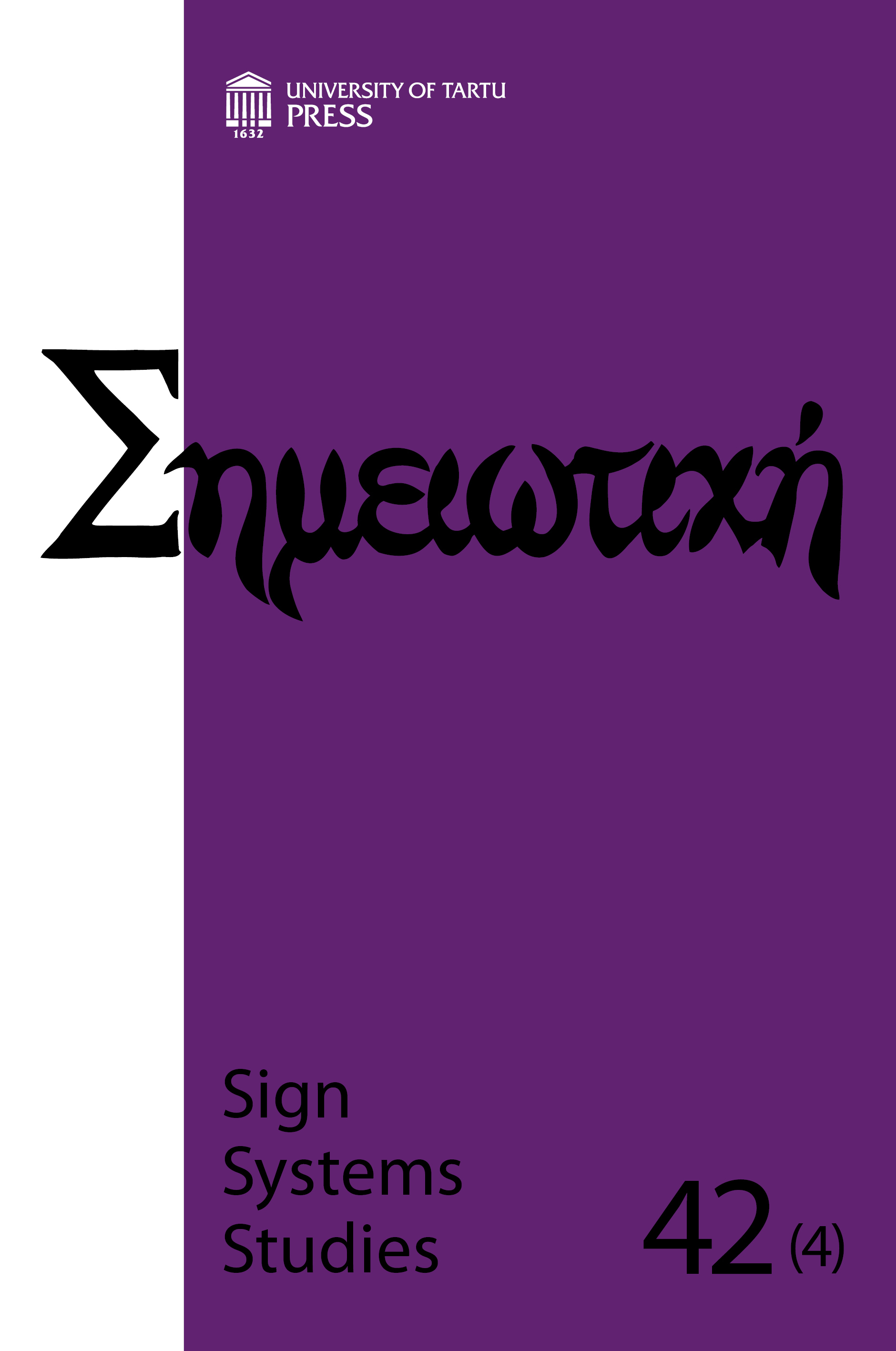Semiotics, culture and space
DOI:
https://doi.org/10.12697/SSS.2014.42.4.02Keywords:
semiotics of space, anthropology of space, Tartu-Moscow School, Juri Lotman, spatial metalanguageAbstract
Space, in the environmental sense, holds a rather marginal position in semiotics. We shall try, however, to show in this paper that its importance is greater than thought previously, not only because it may establish one of the main sub-fields of semiotic research, but also because it has repercussions on other semiotic systems and even semiotic theory as such. We start by reviewing the main positions of the Theses of the Tartu-Moscow School and compare them to Lotman’s concept of the semiosphere. We conclude that a sociologically sound framework for culture is missing and try to demonstrate that culture is not the only factor composing a society, but there also exists a concept of a material, extra-semiotic society. This framework is systematically developed in relation to geographical space in our second section. We examine the place of space in semiotics according to two different axes of analysis. Th e first axis, discussed in our third section, corresponds to the semiotics of (geographical) space. We approach this field from two different perspectives. The first perspective is the direct study of urban space as a text, that is, it is focused on space-as-text. Three case studies are discussed, all drawn from pre-capitalist societies: the semiotic urban model in ancient Greece, the Ethiopian military camp and the spatial organization of the traditional Libyan oases. To the second perspective corresponds the semiotic study of the geographical spaces constructed by literary texts, that is, space-in-text. Here, we discuss two case studies: the ideal Platonic city and the medieval Arthurian courtly romances. These analyses are followed by an overview of the semiotics of space in pre-capitalist societies, to which we compare Lotman’s views.
The second axis, discussed in our fourth section, concerns the importance of space for semiotic theory. We show that space can serve as a tool for the analysis of texts from other semiotic systems and focus on the use of space by different spatial metalanguages.


